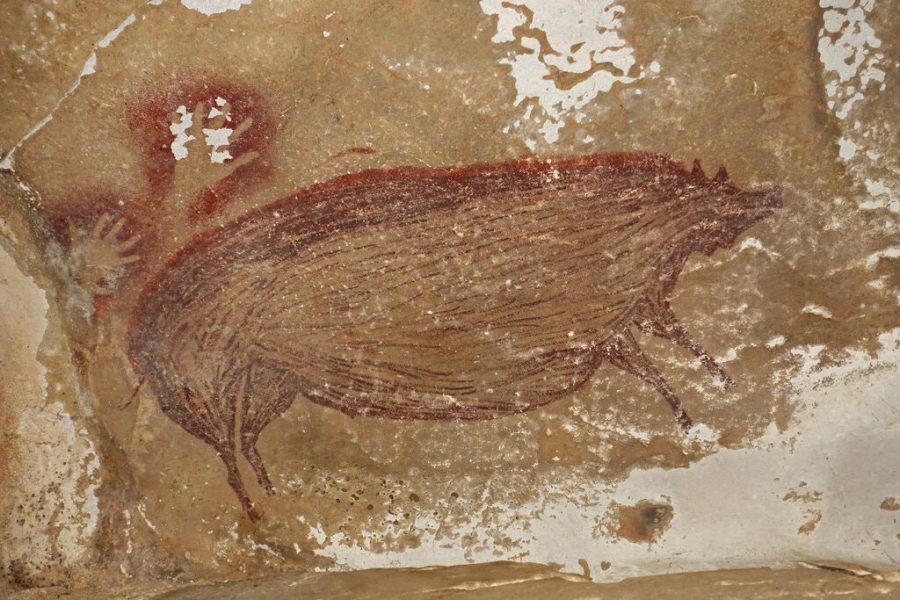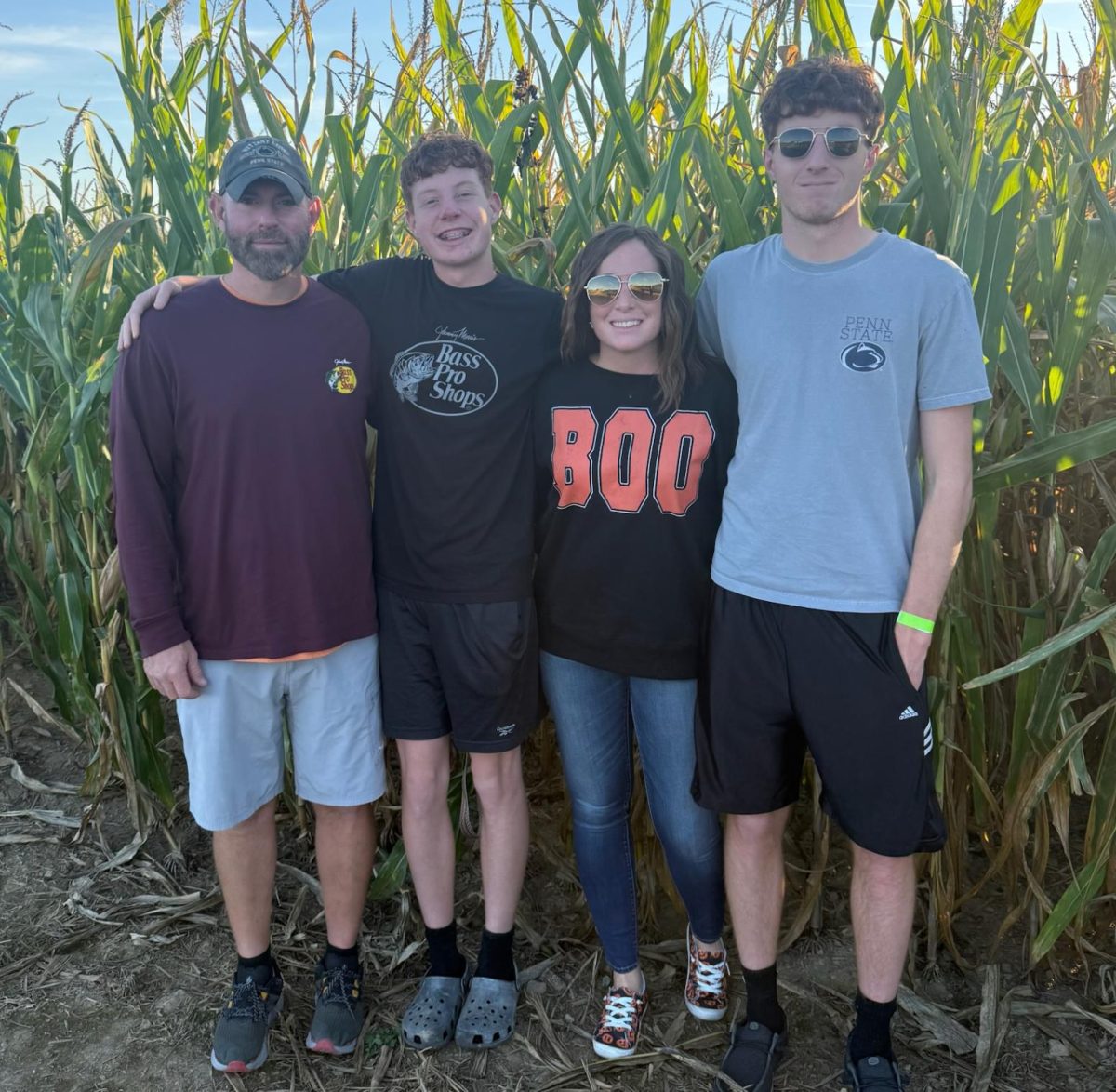Sulawesi is the largest island in Wallacea, a biogeographically distinct zone of oceanic islands between Asia and Australia. Sulawesi has a long history of human occupation. The earliest archaeological evidence is from Talepu: a Middle Pleistocene site on the south of the island. The pre-Austronesian rock art is characterized by hand stencils and figurative animal paintings. In most instances, animal images were executed in a single color, typically being red or purple, using brushwork and/or fingertips. Previously, the earliest dated rock art from this region was a figurative painting of a Sulawesi warty pig. The pig, which was made in the limestone karsts of Maros-Pangkep, South Sulawesi, was created at least 43,900 years ago. Scientists were able to find this out by using Uranium-series dating.
The Uranium-series dating of two figurative cave paintings of Sulawesi warty pigs was recently discovered in the same karst area. In total, five figurative paintings of animals from Maros-Pangkep have previously been dated to the Late Pleistocene age using Uranium-series isotope analysis. The oldest, with a minimum age of 45,500 years, is from Leang Tedongnge. The second oldest image is from Leang Balangajia and dates back at least 32,000 years. From what humans know of, the animal painting from Leang Tedongnge is the oldest work of art in the whole world.










